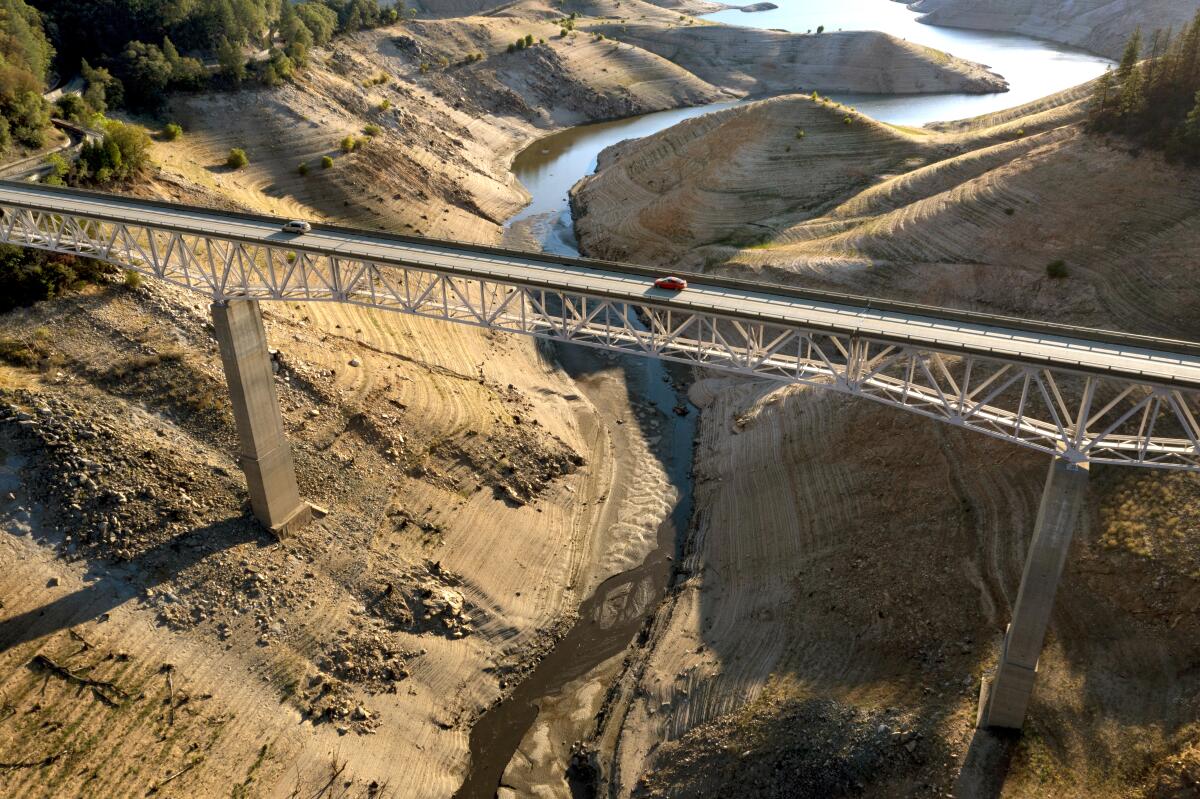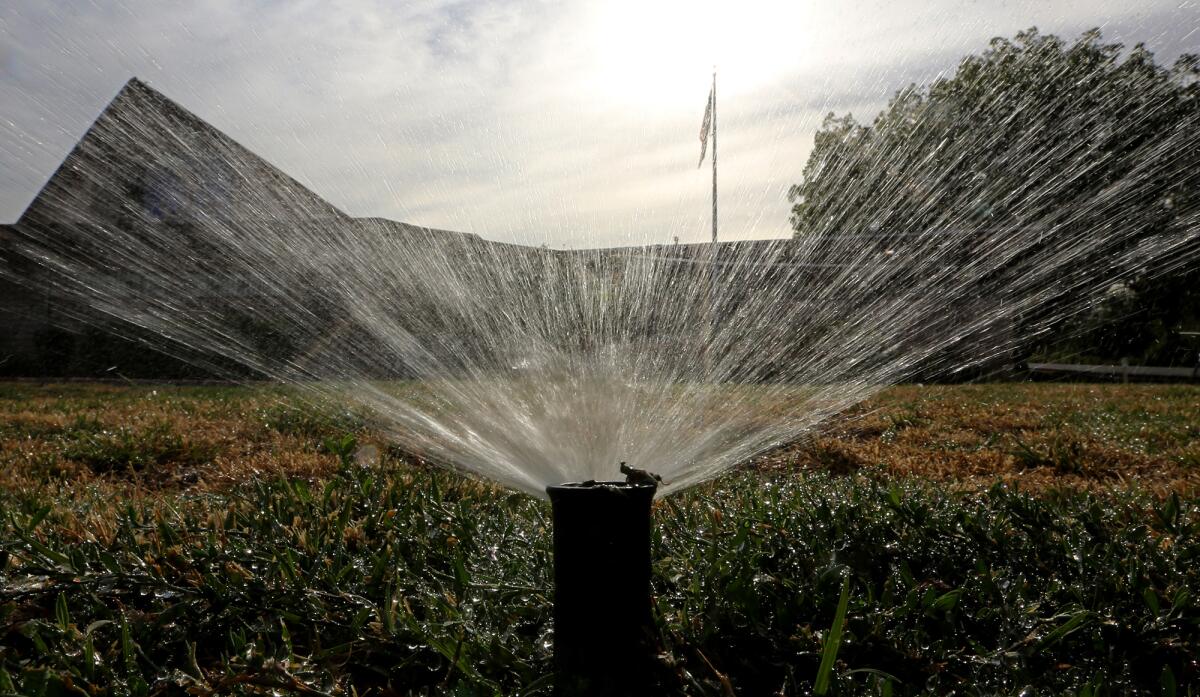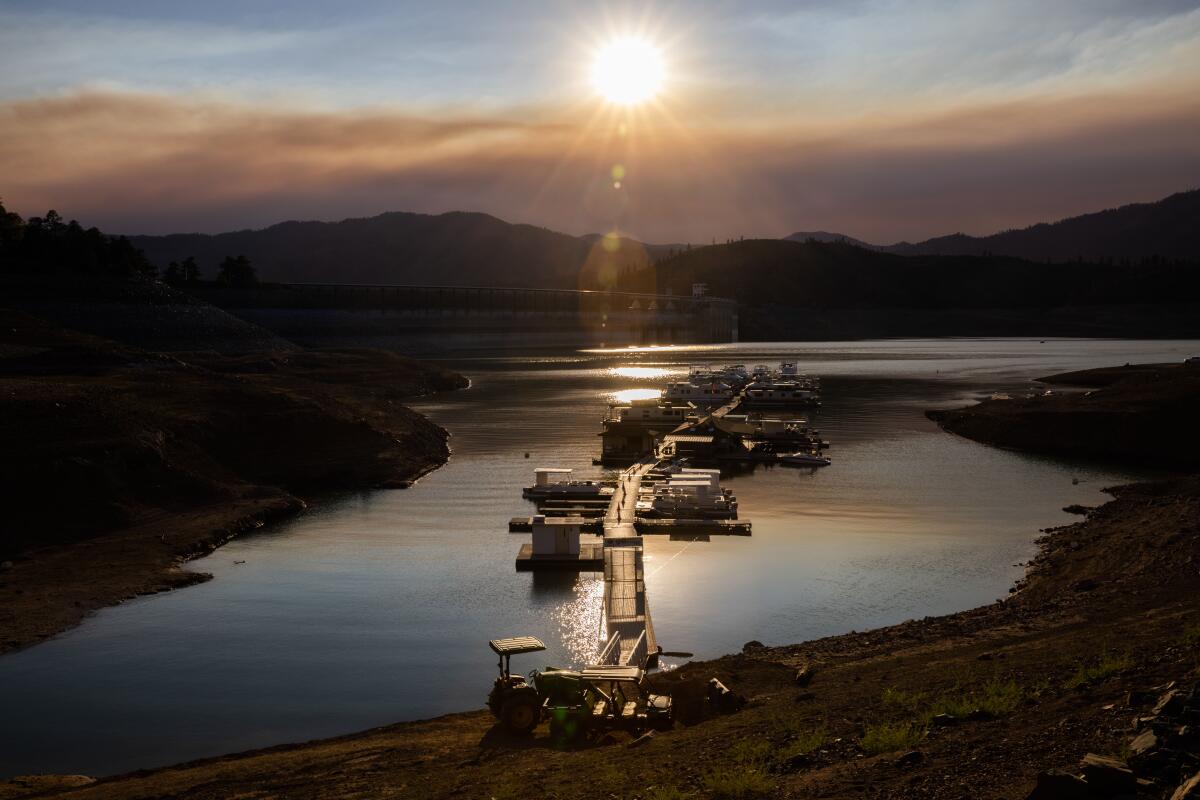Newsom urged Californians to cut water use by 15%. In February they saved less than 1%

- Share via
Total water usage in California cities and towns decreased by just half a percent in February compared with the same month in 2020, a far cry from Gov. Gavin Newsom’s goal of reducing urban water use by 15%.
Figures released this week by the State Water Resources Control Board showed that even during a third year of drought, Californians have been slow to step up conservation efforts.
Joaquin Esquivel, chair of the water board, said it’s vital that Californians continue to make progress on conservation, “given not just this drought but the increasing aridity in the West” with climate change.
Newsom in July called for Californians to voluntary reduce water use by 15%. But the state’s cumulative water savings from July through February stand at 5.8% compared with the same months in 2020, down from 6.4% a month ago.

In February, the San Francisco Bay Area reduced water use 4.6%, while the South Coast region of Southern California — which constitutes 55% of the state’s population — used just 0.2% less water.
In other parts of the state, people used more water than they did in February 2020. In the Sacramento River region, water use was up 6.7%. And in the inland desert, the Colorado River region of Southern California, residents used 3.2% more water.
Newsom last week issued an order for urban water suppliers to implement more aggressive conservation measures, requiring them to activate “Level 2” of their local drought contingency plans to prepare for shortages. The governor also directed the state water board to consider a ban on watering “nonfunctional” grass at businesses and other properties.
Esquivel said the board will be moving to implement the governor’s order, and there is great potential to save more water by reducing outdoor water use. He said the state now has “critical needs for conservation.”
The levels of most of California’s biggest reservoirs, from Shasta Lake to San Luis Reservoir, are far below average. And the snowpack in the Sierra Nevada now stands at just 31% of average.

The mountain snowpack, which typically makes up nearly a third of California’s water supply, has shrunk rapidly during the state’s driest January through March on record.
“What we would normally anticipate being our wettest months of the year, we had historic dries this year,” Michael Macon, an environmental scientist, told the water board. He said the drought conditions are intensifying, “and we anticipate it only getting worse through the summer.”
This month is again expected to be warm and dry, Macon said, and based on the latest forecasts, “we’re looking at the driest three-year period on record.”
Warmer temperatures brought on by human-caused climate change have been making droughts more intense in California and across the West. Scientists have found that the extreme dryness since 2000 in the West, from Montana to northern Mexico, now ranks as the driest 22-year period in at least 1,200 years and has been worsened by the heating of the planet.
The Colorado River, which supplies water to seven states and Mexico, has shrunk dramatically during two decades of dryness intensified by unprecedented warmth, and its reservoirs are continuing to decline.
California’s water managers have cut deliveries through the State Water Project to 5% of full allocations, and have called for residents to conserve.
Water suppliers that depend heavily on the State Water Project have imposed restrictions on outdoor watering. The board of Las Virgenes Municipal Water District in western L.A. County voted on Tuesday to reduce outdoor water budgets for customers from the current 75% to 50%.
The district’s officials said the restrictions are an effort to delay the need to take more severe measures, such as banning all outdoor watering. The Las Virgenes board also decided to hire a company to help with enforcement efforts and prevention of waste.
Water deliveries have also been cut back for many farming areas in the Central Valley this year.
Some water researchers have said the state should adopt mandatory statewide drought restrictions, as then-Gov. Jerry Brown did in 2015. State officials have said they will consider imposing mandatory water restrictions, but they are focusing on targeting drought responses based on local circumstances rather than a “one-size-fits-all” approach dictated from Sacramento.
State officials presented data Tuesday that showed per-capita residential water use in February averaged 74 gallons per day, one of the highest amounts in nearly a decade. The month was warmer than average and extremely dry, which can push up water use.
The board’s staff also analyzed data from urban water suppliers statewide and found that the vast majority of water agencies charge less per additional unit of water as customers use more.
“The effect of this is that customers who are using the most water are given this sort of bulk discount,” said Charlotte Ely of the agency’s research and planning office. “They’re paying less per unit as they consume more.”
The board also discussed data showing that some higher-income areas use more water than areas where residents have lower incomes.
The state should look more at per-capita residential water use as a target “because we have a lot of inequities right now in terms of who is using water and how reductions in use may be felt,” said board member Laurel Firestone.
She said the state also needs to look more at the issue of water affordability, ensuring everyone can afford a basic amount of water while moving toward rate structures that “aren’t effectively subsidizing high water users.”
More to Read
Sign up for Essential California
The most important California stories and recommendations in your inbox every morning.
You may occasionally receive promotional content from the Los Angeles Times.











